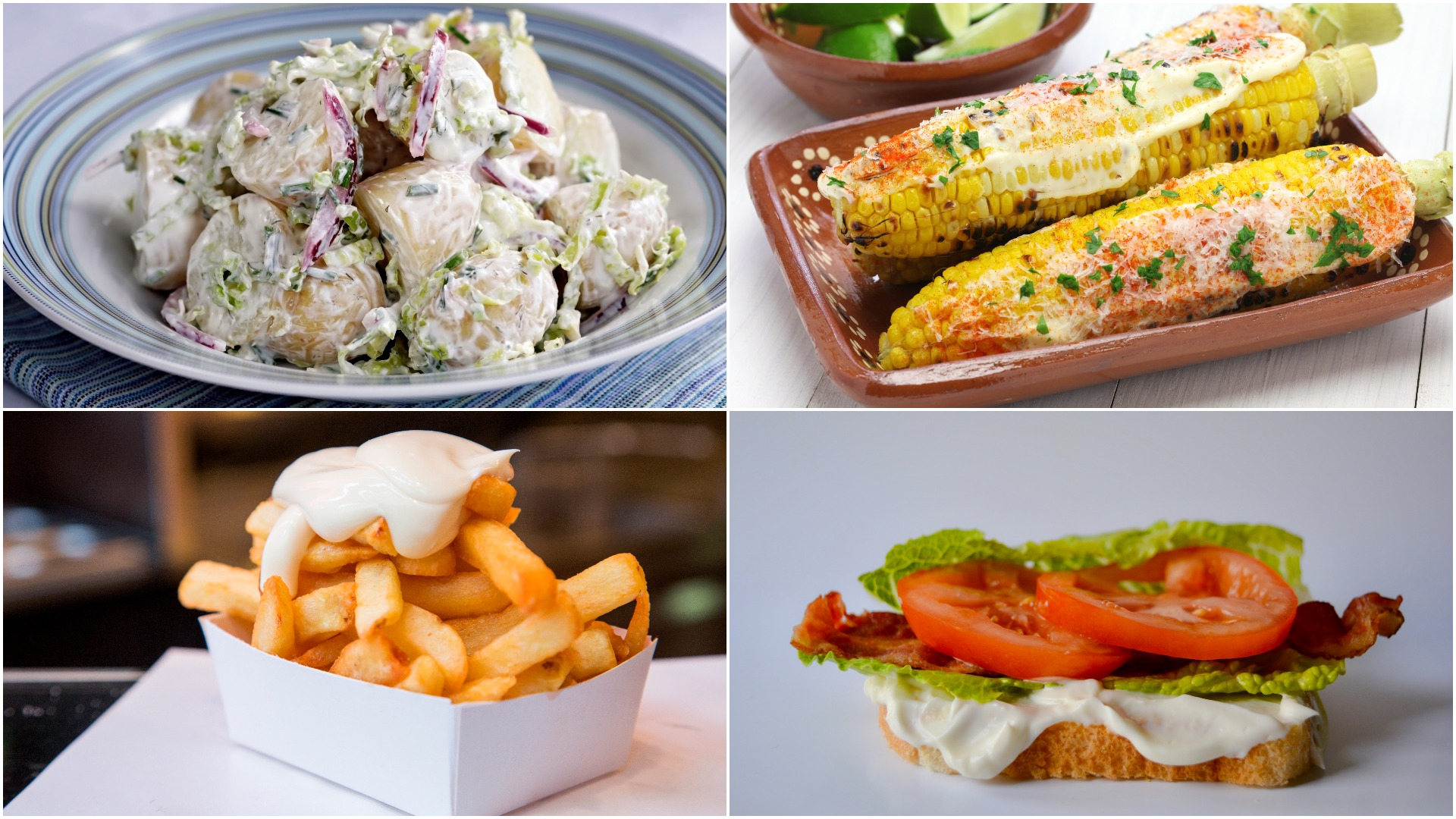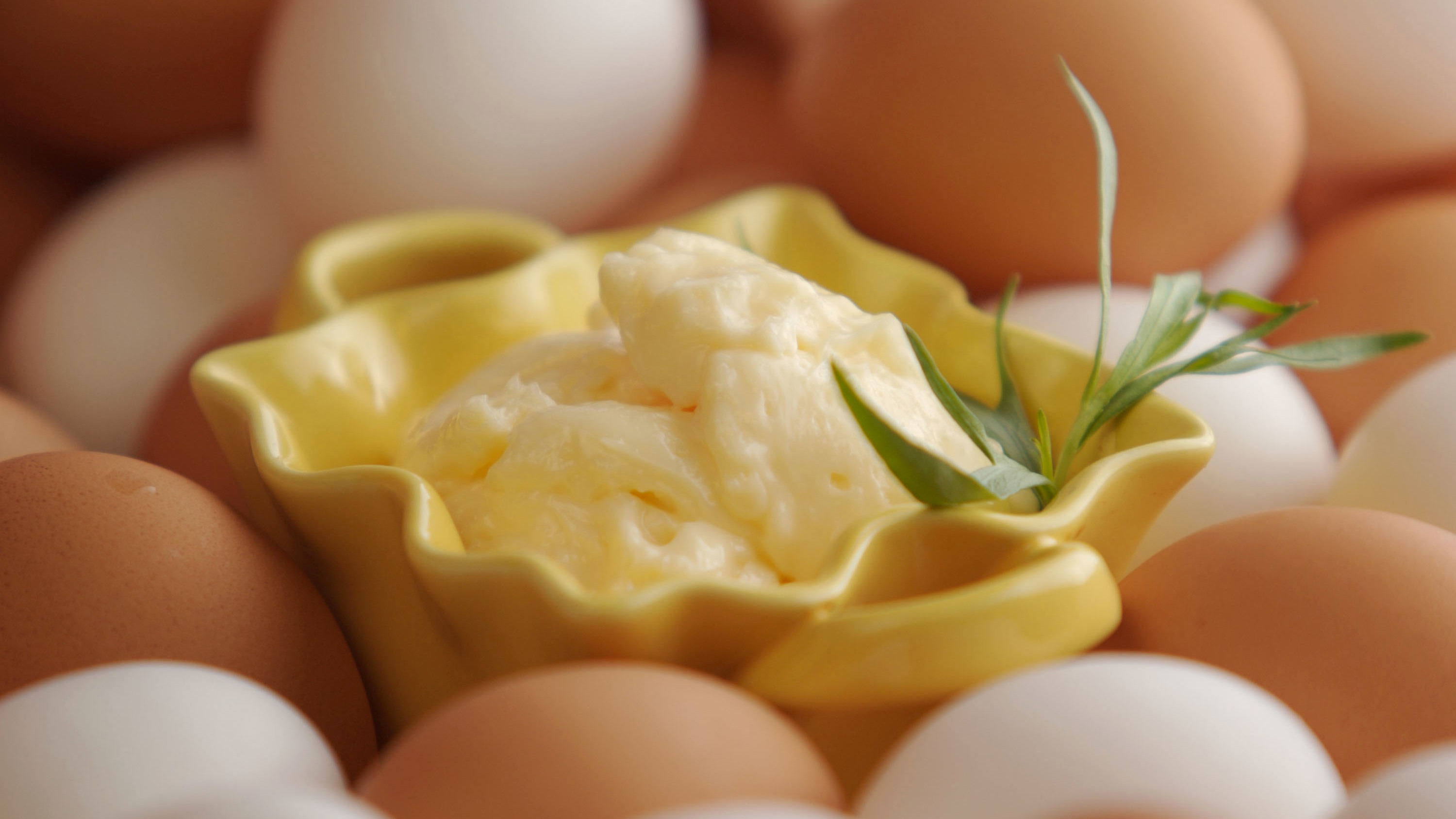Spread The Love: Tips And Tricks To Make You A Master Of Homemade Mayo
If you're squicked out by mayo, consider this your trigger warning: Mayonnaise ahead. Those who love mayo, though, know of its creamy ability to transform everything from sandwiches to French fries to grilled cheese. With picnic season just over the horizon, we turned to chefs for their best mayonnaise-based tips and creations. Haters, step aside.
Miles Thompson, executive chef of Michael’s Santa Monica in Santa Monica, California
My main tip for making mayo from scratch is to whip all of the wet ingredients—vinegar, lemon juice, water, egg yolks, and salt—with the exception of the oil for one full minute prior to the addition of the fat. This way there is more air space between the fat and water molecules allowing for an easier emulsification of the fat. Also, don't exceed eight fluid ounces of fat per large yolk.
David Posey, chef/owner of Elske in Chicago
In my opinion, the best ways to spruce up your mayo is to add a powdered chicken base in your mayo as a dressing for chicken salad or deviled eggs. The result is a real chicken and eggs vibe here. You can also mix your mayo with kosho seasoning, which is a spicy citrus condiment that perks things up, or add some MSG in mayo to boost savoriness.
Jamie Young, executive chef/partner of Sunday In Brooklyn in NYC
At the restaurant right now, we're making a Worcestershire aioli for our burger. It's better than regular mayo because it brings a steakhouse-like flavor. Whisk together 1 egg yolk, 2 tablespoons lemon juice, 2 tablespoons water, 2 tablespoons Worcestershire sauce, 1 clove very finely minced garlic, and salt and pepper to taste, keep whisking and slowly add 2 cups sunflower oil in until it comes together.
Mark Lord, executive chef of Joe’s Seafood, Prime Steak & Stone Crab in Las Vegas
I like to use rendered bacon fat along with vegetable oil to make a bacon mayonnaise. Mix it with chopped bacon and use it as a dressing for potato salad.
Maiko Kyogoku, owner of Bessou in NYC
Mayo is a favored condiment in Japanese cuisine and can be spiced up with just about anything. We like to add hawaij, a traditional Yemen spice mix, and curry to mayo to make a savory dip that goes great with roasted potatoes or on a sandwich.
Christopher Collins, chef/owner of Twisted Grove in Phoenix and Scottsdale, Arizona
While extra-virgin olive oil is commonly used and grapeseed oil gets a lot of attention for its neutral flavor profile, I like to make my homemade mayo with avocado oil. The avocado oil is healthy and creates a rich, thick and mildly flavored mayo. Side note: Use sea salt instead of kosher salt for a little softer profile.
Stanley Michalski, executive chef of Dovetail in NYC
I'm a sucker for wasabi mayo: fresh wasabi, coriander, lime and scallion. That's the way to go—put it on any kind of fried fish.
Donny Farrell, executive chef at Oyster Bah in Chicago
At my first job, we served our fries with a mayo-based sauce called samurai sauce that was basically a spicy mayo with champagne vinegar, garlic, whole grain mustard and a hot pepper purée that we made in-house. One trick if you're making mayo from scratch is to use mustard—it helps stabilize the emulsion because it naturally contains lecithin.
Shane McBride, executive chef of Maysville in NYC
Pretty sure that mayo is my favorite condiment since I was a kid, but it has to be Duke's mayo. Then the additions can be endless. I really like to use buttermilk, different hot sauces and pickle juice as my base flavors to build on. My all-purpose burger or sandwich mayo is a mix of Duke's mayo, dill pickle juice, garlic and mustard powder, Frank's RedHot sauce, salt and pepper. It goes great with fries, too.

